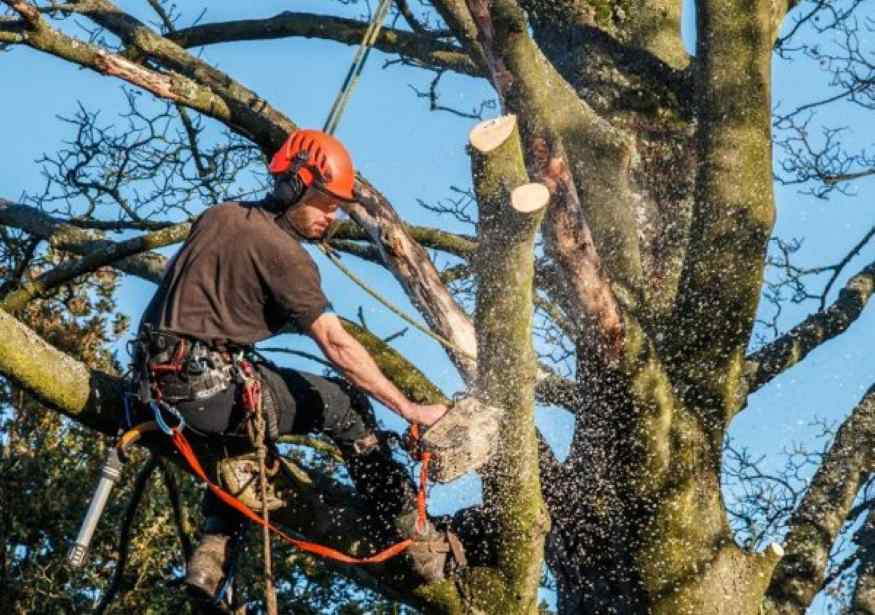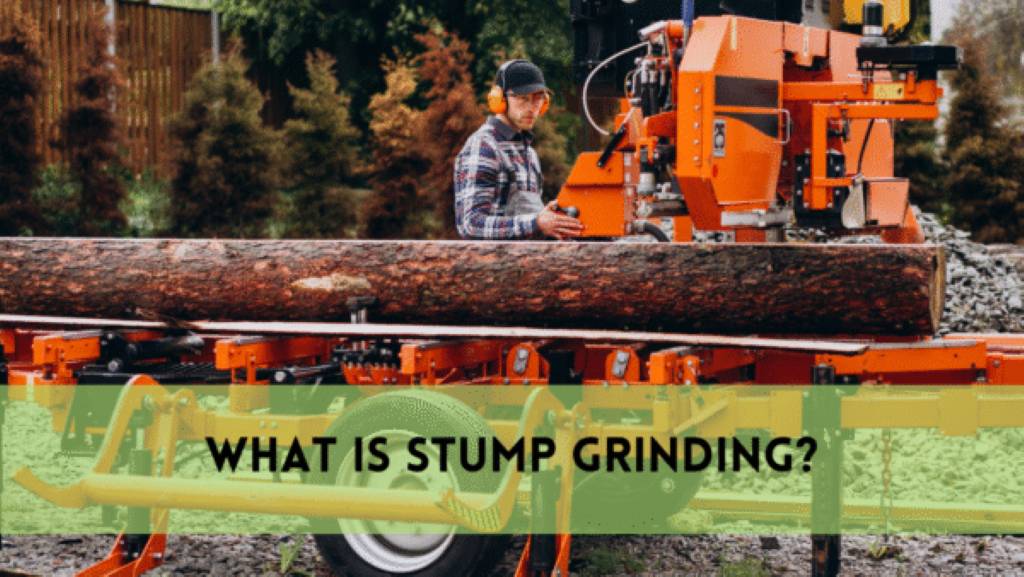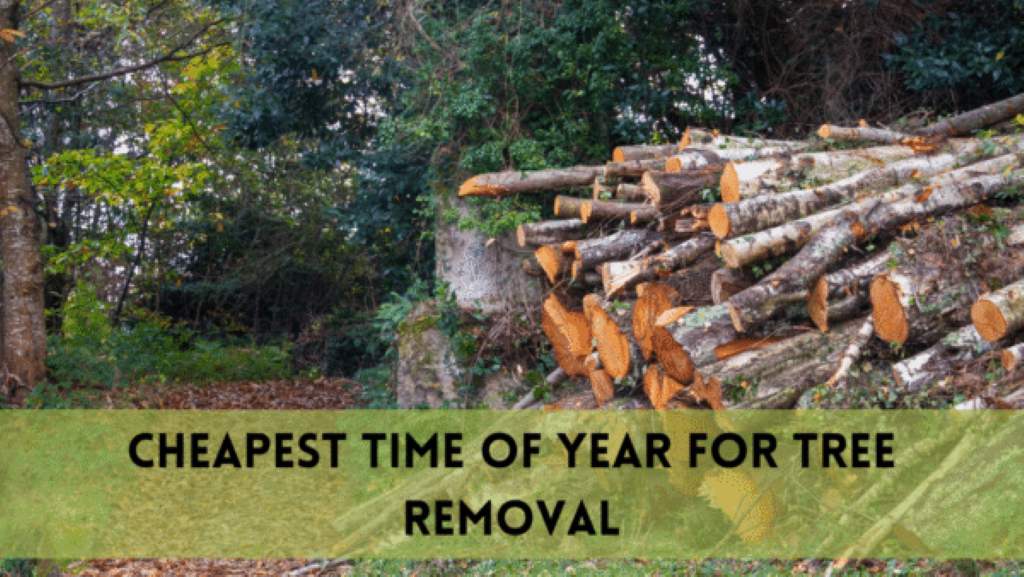Small trees might occasionally outgrow their place in the yard, whether it’s because of a need for extra space, safety issues, or a change in the terrain. If you’re wondering how to remove small trees, this article will provide helpful advice, detailed instructions, and professional pointers to make the process simple and effective.
Even though removing small trees may seem difficult, you may successfully regain your outdoor area while reducing potential risks if you have the necessary information and skills. We’ll discuss numerous removal techniques, from manual procedures to chemical solutions, and we’ll help you understand when each technique is most suited.
Equipment and Supplies Required:
- Wear protective clothing that covers your arms and legs to start, along with robust gloves, safety glasses, and protective apparel. You will be shielded from potential harm and debris by doing this.
- Use a robust, well-balanced shovel with a pointed blade. You can more efficiently dig around the tree’s base if you do this.
- Using pruning shears or a hand saw will enable you to make precise cuts in smaller branches and leaves. This action will lighten the tree’s load and make it easier to handle.
- Chainsaw or Loppers (Optional): To chop through the tree’s heavier branches or larger trunk, you may require loppers or a chainsaw.
Step-by-Step Process: How to Remove Small Trees?
- Begin by wearing your safety gear: safety glasses to shield your eyes, gloves to protect your hands, and sturdy clothing to minimize the risk of cuts and scrapes.
- Take a close look at the tree you plan to remove. Ensure it’s a small tree with a trunk diameter of 2 inches or less. Larger trees may require professional assistance.
- Choose the best time for removal. Late winter or early spring is ideal when the ground is softer, and tree growth is slower.
- Clear the area around the tree, removing any obstacles and ensuring it’s safe for work. Consider the direction in which you want the tree to fall
- Start by using pruning shears or a hand saw to remove smaller branches and foliage from the tree. This reduces the tree’s overall weight and makes it easier to handle.
- Begin digging a trench around the base of the tree, keeping it about 2 feet away from the trunk. Dig down until you expose the root collar, which is where the trunk meets the roots.
- Carefully use loppers, a chainsaw, or a hand saw to cut through the smaller roots near the trunk. Avoid cutting too close to the base of the tree to prevent damage to the trunk.
- Gradually push the tree back and forth to loosen the roots. If the tree doesn’t move easily,
- Depending on local regulations and your preferences, you can chip the tree for mulch, burn it, or dispose of it as green waste.
- Once the tree is loose, carefully pull it out of the ground. If the roots are still holding it, use the shovel to sever them.
- After successfully removing the tree, fill the hole left behind with soil. Tamp the soil down firmly to make it level with the surrounding ground
- Depending on local regulations and your preferences, you can chip the tree for mulch, burn it, or dispose of it as green waste.
Chemical Removal of Small Trees
As certified arborists, Small trees can be removed chemically as an alternative to cutting them down physically. Typically, these substances are referred to as herbicides or tree and stump killers. Here is a summary of the several chemical methods for cutting down tiny trees:
Various Herbicides:
Systemic herbicides: These enter the tree’s body and travel throughout it, destroying the tree from the roots up. Herbicides made using glyphosate fall under this heading.
Herbicides used in direct contact affect the area of the tree they come into contact with. They may not effectively kill the roots and are better suited for tiny trees with thin bark.
How to Use Herbicides to Get Rid of Small Trees?
Start by donning the proper safety gear, such as gloves, safety glasses, and protective clothing, to reduce chemical exposure.
Identify the Tree: Make sure you have a clear idea of which tree you want to cut down. Be accurate since herbicides may harm neighboring plants.
Use a chainsaw or pruning saw to trim the tiny tree as near to the ground as you can before applying the herbicide. This facilitates the exposure of new wood and the absorption of herbicides.
For mixing and application, adhere to the manufacturer’s recommendations listed on the label of the chosen herbicide. Usually, you have to spray the herbicide directly on the just-removed stump.
Both the concentration and the time of treatment affect how well a herbicide works. Herbicide is frequently most effective when applied right away after the tree is cut down.
Take steps to prevent surrounding desirable plants from coming into contact with herbicides. During application, you can protect them with cardboard or plastic sheets.
After applying the herbicide, be patient while awaiting the results. The herbicide may need a few weeks to spread into the tree and ultimately kill it.
After the tree has passed away, you can remove it by hand. This may be simpler because the tree is already weak.
Chemical Removal Benefits:
- Comparatively little physical work to manual removal.
- It is capable of completely killing the tree, including the roots.
- Appropriate for circumstances where manual removal is difficult or undesired.
Negative effects of chemical removal
- Slow process: The tree’s final demise could take several weeks or months.
- For bigger or more established trees, it might not be as effective.
- Concerns for the environment and the requirement for safe chemical disposal.
Conclusion
Learn how to remove small trees efficiently with our comprehensive guide. Whether you’re renovating your landscape, boosting safety, or reclaiming space. Discover the best methods, equipment, and even chemical alternatives for removing trees and stumps.
FAQS
Why should I remove small trees from my yard?
Small trees may need removal for various reasons, including overcrowding, disease, or landscaping preferences. Removing them can improve aesthetics and create space for other plants.
What tools do I need to remove small trees?
Common tools include a chainsaw or handsaw, shovel, pruning shears, gloves, safety goggles, and possibly a tree stump grinder for larger trees.
When is the best time to remove small trees?
The best time to remove small trees is during late fall or winter when they are dormant. This minimizes the risk of regrowth.
How do I remove a small tree by hand?
Dig around the tree’s base, exposing the roots, and then use a shovel to leverage and loosen the tree. Pull it out, roots and all, and fill the hole.
Can I use chemicals to remove small trees?
Yes, you can use herbicides to kill the tree gradually. Follow the manufacturer’s instructions and consider potential environmental impacts.




